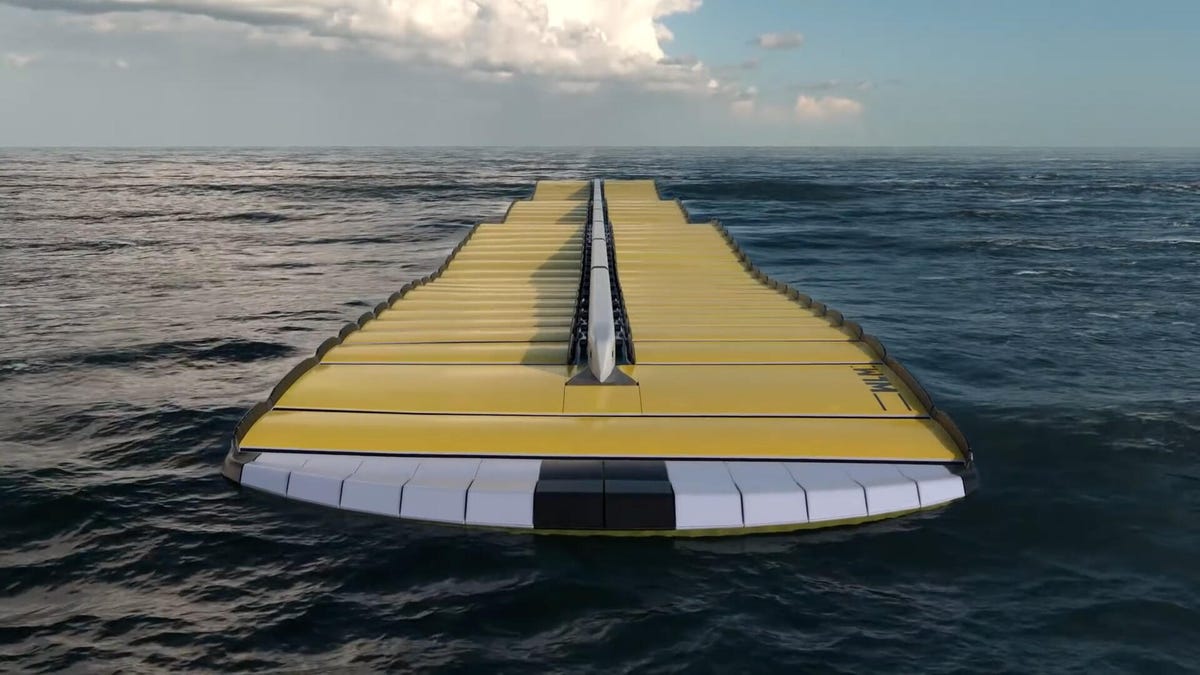Wave Energy Tech Aims to Compete With Fossil Fuels

Watch this: Turning Wave Power Into Electricity, Hydrogen Fuel and Fresh Water
Something that looks like a long yellow raft is floating on the surface of the ocean, harnessing the power of the waves in a bid to compete with the energy sector’s top producer.
“We’re not trying to compete with the other people in wave energy,” says Alex Zakheos, co-CEO of Sea Wave Energy Limited. “We’re not trying to compete with wind and solar. We’re trying to compete with fossil fuels.”
SWEL’s Waveline Magnet can reach lengths of about 600 meters, or 1,970 feet.
SWEL has been developing its wave energy converter for more than 10 years, a journey that’s led to this unique design called the Waveline Magnet, which includes four main components.
The spine provides structure and holds it together. The platform connects the Waveline Magnet to the surface of the water. The levers connect the platform to the spine, and the pumps gather up seawater, where it’s pressurized and can be used for things like desalination, producing hydrogen fuel and generating electricity.
The view from aboard a Waveline Magnet prototype.
The size of these devices varies depending on the wave conditions and energy needs of the area. On the larger end, they can get up to about 600 meters long and 24 meters wide (about 1,970 feet by 79 feet). A case study prepared for a unit of that size in Scotland, where waves were an average of 3 meters, estimated that its power output could be 140 gigawatt hours annually, which Zakheos says is “power station levels of production from a single system.”
Hydrogen could prove to be a valuable and more sustainable store of energy than fossil fuels or even batteries, though it has yet to catch on at scale.
The Waveline Magnet still has one final prototyping stage to go through before it’s ready for commercialization. Zakheos tells me the first commercial unit is likely to be a smaller unit focused on desalination.
To see the Waveline Magnet prototypes in action, check out the video in this article.
Source: CNET













